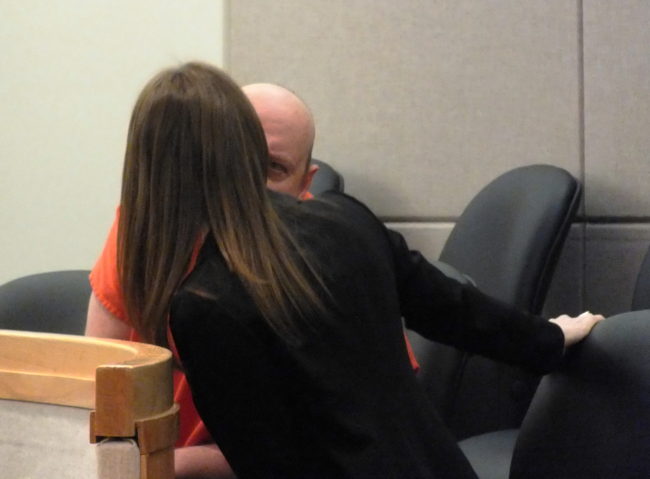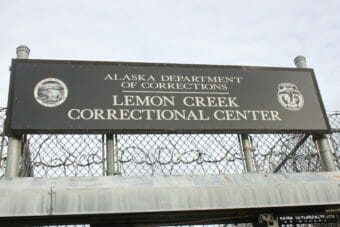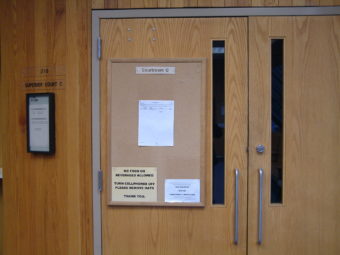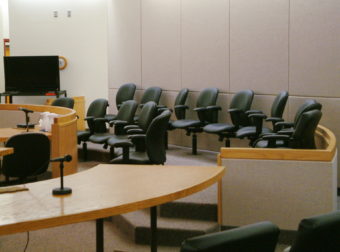
The criminal justice reform bill recently signed into law includes changes intended to save money and reduce the state’s prison population by reducing the factors that contribute to recidivism, or the revolving door of offenders repeatedly returning to prison. The wide-ranging measure includes a small tweak to current law that allows non-violent and low-risk offenders to quickly get back on their feet.
Tucked inside the mammoth bill were a few small sections that add an SEJ, or suspended entry of judgment, as a form of deferred prosecution. An SEJ will likely be imposed for those first offenders who have a high likelihood of rehabilitation and reintegration into society.
“That has to be a negotiated plea agreement. That can only be done with the agreement of the prosecution,” said Quinlan Steiner, head of the Public Defender Agency.
Steiner was also a member of the Alaska Criminal Justice Commission, the panel that developed a series of recommendations that became the foundation of Senate Bill 91, the criminal justice reform measure passed by the Alaska Legislature this session.
After a guilty plea, a first-time or youthful offender who agrees to an SEJ may serve a little jail time – if at all – and be ordered to undergo treatment, pay restitution and fines, and spend time on probation instead of a longer prison sentence. Their case would be dismissed if they successfully follow through with the SEJ’s conditions. For first-time offenders, it could mean a fresh start with a clean slate.
“Because the conviction would have never entered, never formally entered and then the plea withdrawn,” Steiner said.

The concept of deferred prosecution is not new. Former Alaska Supreme Court Justice Alexander Bryner said when they revised Alaska’s criminal code in the 1980s, new statutes modeled after laws elsewhere allowed for a suspended imposition of sentence, or SIS. It’s similar to the new SEJ, but only the sentence is suspended. The former defendant would still have a conviction of record.
An SIS was usually imposed in cases in which first-time offenders are charged with a low-level property crime, and it’s not available for driving under the influence and some crimes against another person, like domestic violence.
“There were individual cases in which there were complaints about leniency,” Bryner said. “But overall I think that judges statewide were pretty good about reserving those kind of sentences for truly deserving people where in many, many cases the prosecution wouldn’t oppose.”

An SIS is not uncommon. According to statistics provided by the Alaska Court System, as many as 4 percent of felony offenders and 2 percent of those charged with misdemeanors may receive an SIS each year. That may not sound like much. But that’s between 719 and 1,004 people each year who are not serving their time in a prison cell. And, with prison costs of up to $158 a day or $57,914 a year for each inmate (according to a 2015 Department of Corrections report on recidivism), that could be as much as $40 million a year that is not being spent for incarcerating low-level or low-risk offenders.
When imposing an SIS, a judge may tell a defendant that their case will be set aside. Early on, that may have been misunderstood by some defendants as the case going away or being expunged from their criminal record. That wasn’t true.
“It just doesn’t serve as a prior conviction for presumptive sentencing purposes, but it can be considered as a prior event in your criminal history,” explained Steiner.

Tom Wagner, a Juneau attorney who works as a contract public defender for City and Borough of Juneau misdemeanor cases, recalled how a former client got caught up in the legal complications of an SIS.
“It was a gray area there,” Wagner said. “I had one person who lost their job with the state because they had claimed on their employment application that they had no convictions. And then, they found out that they had.”
Because there’s still a conviction of record, the case would also show up in CourtView, the court system’s online database.
Wagner said that was a problem for former offenders who were submitting job applications and really making an effort to stay out of trouble.
“When they’re vetting candidates for a job, rather than paying to get a rapsheet from the Department of Public Safety which would say ‘conviction set aside,’ employers would go to CourtView and see that the person had a theft conviction and decide not to hire them,” Wagner said.

In another example, a Kenai woman expected that she could apply for a nurse’s aide certification after receiving an SIS for forgery and theft and the conviction was set aside in 2003. But the Alaska Supreme Court upheld the Board of Nursing’s denial. She was still convicted of a crime. There was also too much similarity between the relationship she had with the vulnerable victims of her earlier crimes and the relationship she would have with her prospective patients.
Justice Bryner wrote the partial dissent in that case, saying he wasn’t satisfied with how the board reached its decision.
“The issue in cases of this kind never arises except for people who have successfully done what they were supposed to do, who have completed everything, and who have successfully established that they are capable of being reformed and not recidivating,” Bryner said.
The Alaska Criminal Justice Commission, of which Bryner was also a member, determined that publicizing records for those with an SIS could negatively affect their ability to obtain housing, assistance, or a good job. Unemployment and lack of stable housing have been identified as major factors contributing to recidivism, or offenders quickly reoffending and returning to prison.
Related reading: Expungement and Limiting Public Access to Alaska Criminal Case Records in the Digital Age from the University of Alaska Anchorage Justice Center.
During a Senate Judiciary Committee hearing in March, North Pole Sen. John Coghill explained that on-line court records would be removed for those who complete treatment programs, serve their time, and satisfy conditions of the SEJ.
“It’s going to be on CourtView while it’s active. That was something that the Office of Victim’s Rights wanted also,” Coghill said. “Just like many other things, once that judgement is satisfied, then you pull the shade down.”
Under a separate bill signed into law earlier this year, CourtView records will be removed in cases in which charges are dropped or dismissed, or the defendant is acquitted at trial. But case files at the courthouse or the microfilm archives would not be affected, and they would remain intact.
Sen. Coghill was one of the Legislature’s representatives to the Alaska Criminal Justice Commission and the lawmaker who sheparded Senate Bill 91 through the legislative process last session. The bill grew to 123 pages before it was signed into law by Gov. Bill Walker earlier this month.
